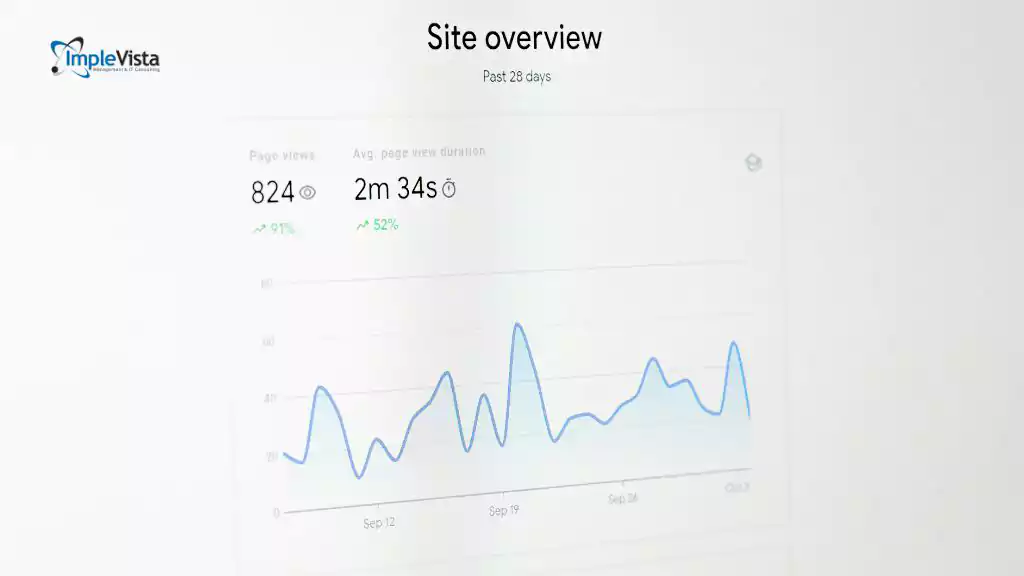In the competitive world of e-commerce, standing out in search results is crucial. One powerful yet often underutilized strategy is schema markup. This structured data helps search engines better understand your website’s content, leading to enhanced visibility, rich snippets, and improved SEO performance. Schematic markup can give you a competitive edge whether you’re a growing e-commerce store or a large retailer.
In the world of e-commerce, standing out is crucial. Schema markup can be your secret weapon. It helps search engines understand your site better. This leads to improved visibility in search results. Schema markup is a form of structured data. It enhances your site’s appearance in search results with rich snippets.
Rich snippets can display product prices, reviews, and availability. This can increase your click-through rates significantly. For e-commerce sites, schema markup is essential. It helps you stand out in competitive search results. Using a schema markup generator can simplify the process. It makes implementing schema markup easier and more efficient.
Understanding and using schema markup can boost your SEO efforts, leading to better rankings and more traffic. In this guide, we’ll explore the role of schema markup in e-commerce SEO. Let’s dive in!
What is Schema Markup? Understanding the Basics
Schema markup is a type of microdata. It works with search engines to provide detailed context about your webpage. When implemented, it helps search engines deliver more informative results. This means your site might feature additional information in search snippets. Think of schema markup as a translator. It turns complex data into easy-to-read information for search engines.
Here’s what schema markup does:
- Enhances search result appearance
- Provides detailed product information
- Boosts search engine understanding
Schema markup is structured data at its core. It’s like an outline or framework for your website’s content. Search engines like Google use this data to improve search results. The goal? Delivering a richer, more engaging user experience. To implement schema markup, start by identifying key data. This data should be structured in a format recognized by search engines. JSON-LD, Microdata, and RDFa are standard formats used.
Why Schema Markup Matters in E commerce SEO
In the competitive world of e-commerce, standing out is key. Schema markup plays a crucial role in achieving this goal. It transforms the presentation of your content in search engines. This transformation can significantly impact user engagement and site visibility.
When e-commerce sites use schema markup, they can achieve rich snippets, which display extra details like price, reviews, and availability in search results. These enhanced search results make your listing more attractive. Potential customers are more likely to click on listings with rich snippets.
Here’s why schema markup is essential:
- Increases click-through rates
- Enhances SERP visibility
- Provides detailed, upfront info
Schema markup is not only beneficial but vital for e-commerce SEO. It enhances how your products and offers are seen on search engines. Websites using schema markup can also rank higher in search results. This ranking is due to the extra context it provides to search engines.
In a digital marketplace, small advantages matter. Schema markup provides e-commerce sites with that competitive edge.
Types of Schema Markup for E commerce Websites
Understanding the various types of schema markup is essential for optimizing e-commerce SEO. Each type serves a different purpose and enhances other aspects of your online store.
Product Schema
Product schema is the foundation for e-commerce sites. It provides search engines with details about your products.
This schema includes:
- Product name
- Description
- Image
- Brand details
Implementing product schema helps potential customers find relevant product information quickly. The benefits include increased visibility and trust. Having product schema ensures that search engines display accurate and informative product details.
Offer and Price Schema
Offer and price schema target promotional elements of your products. They highlight special deals, discounts, and pricing.
Key elements of offer schema:
- Current price and currency
- Special offers or discounts
- Availability Status
This schema is particularly useful during sale periods, like Black Friday. Customers are likelier to click on offers with visible price reductions or discounts.
Review and Rating Schema
Reviews and ratings influence customer decisions significantly. This schema captures and displays user reviews directly in search results.
Key features include:
- Star ratings
- Number of reviews
- Summary of feedback
Positive reviews can enhance the perceived quality of your products. Displaying reviews directly impacts shopper confidence and click-through rates.
Breadcrumb Schema
Breadcrumb schema simplifies site navigation. It shows the path visitors take to reach a specific page.
Benefits of breadcrumb schema include:
- Improved user experience
- Enhanced site structure clarity
- Better crawling by search engines
Efficient navigation fosters better engagement and reduces bounce rates.
Video and Image Schema
Visual content is vital in e-commerce. Video and image schema enhance how these assets appear in search results.
These schemas can:
- Highlight video content
- Showcase product images
- Provide visual previews in search results
Engaging visuals can attract more customers, boosting site traffic.
Organization and Local Business Schema
This schema provides essential business information. It’s particularly valuable for local SEO.
Features of organization and business schema:
- Business name and logo
- Location and contact info
- Opening hours
Incorporating this schema ensures your business details are easily accessible, enhancing local visibility.
How Schema Markup Enhances Structured Data SEO
Structured data is a core element of SEO, offering a way to communicate more clearly with search engines. Schema markup is the language of structured data, enhancing SEO performance and visibility.
Schema markup aids in defining the context of web content. This clarity helps search engines interpret pages accurately and display relevant results. It’s a powerful tool that improves search engines’ understanding of a site.
Here are the ways schema markup influences structured data SEO:
- Improves data organization and site indexing
- Provides clearer content context for search engines
- Increases the chances of appearing in rich snippets
Schema markup helps create a richer search experience. Adding structured data leads to higher visibility on search results pages.
Utilizing schema-markup ensures content stands out, attracting more clicks and engagement. Rich snippets resulting from proper markup can improve organic click-through rates. This enhanced visibility is vital for e-commerce success, potentially boosting sales and brand authority.
Rich Snippets SEO: The Power of Enhanced Search Results
Rich snippets significantly impact SEO by providing a richer search experience. They’re extensions of regular search snippets, offering additional information to users.
E-commerce businesses can leverage rich snippets to display product details, increasing user engagement. This can include information like prices, ratings, and availability directly within search results.
Rich snippets stand out visually, drawing user attention. This improved visibility often leads to higher click-through rates and can drive more traffic to websites.
Some benefits of rich snippets in SEO include:
- Increased click-through rates
- Enhanced user engagement
- Visibility improvement on SERPs
Rich snippets help deliver relevant content directly to users. They present critical details upfront, reducing the need for users to click through unhelpful links.
Implementing schema-markup is crucial to enabling rich snippets. It’s a competitive advantage, particularly in crowded markets, where standing out in search results can increase trust and credibility. E-commerce sites adopting rich snippets can expect immediate and long-term benefits in their SEO strategies.
Step-by-Step Guide: Implementing Schema Markup on E-commerce Sites
Implementing schema-markup can seem daunting, but breaking it into steps simplifies the process. First, identify the key pages needing enhancement. Product pages are good starting points. Consider using tools that generate schema-markup for faster results. Schema-markup generators are beneficial for those unfamiliar with coding.
Create a list of essential schemas you need:
- Product Schema
- Offer Schema
- Review Schema
Choose a method to implement the markup. Options include manual methods and platform-specific solutions tailored for e-commerce platforms.
Check your code for errors using Google’s Structured Data Testing Tool. Validation ensures proper display in search results and adherence to guidelines.
Regularly update schema-markup as product details change. This includes prices, availability, and special offers.
Test different schema types to determine which most positively impacts traffic and rankings. Analyze results and adjust as needed for optimization.
Incorporating schema-markup into your SEO strategy can yield significant benefits. This investment is time and effort well spent. Finally, the performance must be monitored closely to measure effectiveness.
Using a Schema Markup Generator
schema-markup generators streamline the implementation process. These tools allow the automatic generation of the needed code snippets.
Various online tools cater to different needs. Common options include:
- Google’s Structured Data Markup Helper
- JSON-LD Playground
- Schema.org’s Generator
Choose a generator that suits your business requirements. Some tools integrate with popular CMS platforms, making implementation easier.
Paste the generated code into your website’s HTML or use plugins for automatic placement. This makes it straightforward for non-developers.
Test the results to confirm proper functioning. This ensures search engines read the enhanced data accurately, providing a better user experience.
Manual Implementation: JSON-LD, Microdata, and RDFa
For those comfortable with coding, manual implementation is an option. JSON-LD is the format Google recommended due to its simplicity and flexibility.
Here’s how to choose a format:
- JSON-LD: Easiest to use; it’s embedded in the <script> tag within the <head> or <body> of your HTML. It doesn’t interfere with the visual content and is highly flexible—ideal for most e-commerce websites.
- Microdata: Requires adding schema attributes directly to HTML elements. It’s more time-consuming and tightly integrated with the page content, making maintenance more difficult.
- RDFa: Similar to Microdata, it integrates with HTML5 and uses attributes to annotate content. It’s less commonly used but still supported.
For most e-commerce sites, JSON-LD is the best option as it allows structured data to be added cleanly without altering the visible page structure.
Frequently Asked Questions
Q: What is schema markup, and why is it important for SEO?
Schema markup is structured data that helps search engines understand and display your content more effectively, boosting visibility and CTR.
Q: How does schema markup benefit e-commerce websites?
It enables rich results like product ratings, prices, and availability, making listings more attractive and informative.
Q: What are some common types of schema markup used on e-commerce sites?
Product, review, offer, video, and breadcrumb schemas are most commonly used.
Q: Can schema markup directly improve my website’s search engine rankings?
While it doesn’t directly influence rankings, it enhances search results, leading to higher engagement and improved SEO performance.
Q: What mistakes do I avoid when implementing schema markup on my e-commerce site?
Avoid using incorrect types, marking hidden content, and neglecting updates or validation.
Q: How can I measure the success of schema-markup in my SEO efforts?
Use tools like Google Search Console and Rich Results Test to track visibility, CTR, and performance enhancements over time.




